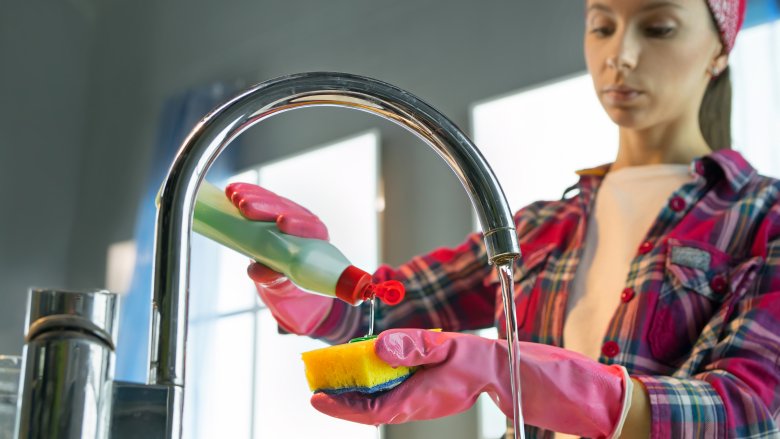There are many mistakes we can make when it comes to sponges. However, some are minor issues while
others threaten your health and safety. Here are the 5 things we do wrong with kitchen sponges. We’ll
explain why these are mistakes and what you can do instead.
You’re Not Sterilizing the Sponge Correctly
Don’t nuke your sponge in the microwave to try to kill the germs. That won’t work. It needs to be soaked in
bleach water or boiling water to kill bacteria. You can even run it through the washing machine with bleach
and hot water. A related mistake is not storing the sponge properly after you’ve cleaned it. Let it sit on its
side so it can drain dry. Leave it sitting in a water-logged storage container, and mold will grow in it.
You’re Using Sponges in the Wrong Places
Don’t use sponges when cleaning meal prep areas. Don’t try to clean butcher blocks and cutting boards.
You’ll pick up the bacteria from raw meat and spread it to other surfaces if you just rinsed the sponge in
running water. Making matters worse, a quick rinse in soapy water won’t kill all the bacteria, so it will infect
the dishes you’re trying to clean. Use bleach wipes or disinfectant and paper towels on these surfaces
instead. You can use sponges to remove cobwebs and scrub stains off your wall as long as it isn’t carrying
germs from your last meal preparation.
You Keep Using the Same Old Sponges
A common mistake people make is continuing to use old sponges. While you can sterilize sponges, the
ability to do so effectively goes down as it wears out. This is why you should replace the sponges you’ve
used scrubbing dishes every day at least once a month. Less frequently used sponges should be replaced
every month. You can maximize the value of the degrading sponges by using them one final time to scrub
your toilets or trash bins before tossing them. Another option is sterilizing them in boiling water before using
to grow seedlings for your garden.
You Don’t Put One in the Freezer
You should consider having a clean water-logged sponge in the freezer. Keep it in a plastic bag. Then you
can pull out this frozen square and use it as an instant ice pack. Whether that reduces the swelling of an
injury, treats burns or keeps your newly packed lunch fresh depends on you. We recommend using a clean,
never-used sponge so that any melt-water that hits your food won’t contaminate it with germs. Remember
that these sponges need to be replaced regularly, too.
Hint: You can also put a slightly damp sponge in the fridge after being sprinkled with baking soda to
deodorize it.
You’re Using Traditional Sponges
You may be using the traditional style of sponges because they’re familiar to you. In other cases, you’re
using them because they’re a little cheaper. Consider upgrading to the microfiber sponges. They’ll dry out
faster, so they won’t grow mold the way wet sponges sitting in the corner of your shower would. They last
longer and resist bacteria better, though they still need to be sterilized and eventually disposed of.
You should also consider getting the durable versions of disposable cleaning wipes. These will scrub the
food debris from your cutting board as well as a cheap sponge, and you can throw out the wipe when done.



